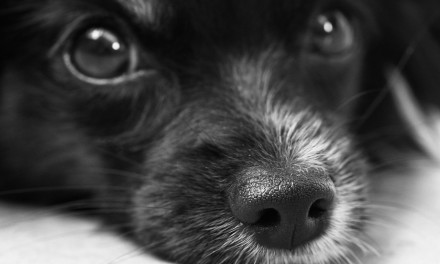Razor-fanged Puppies
by The Pawsitive Packleader, Inc.
Aqcuried Bite Inhibition (ABI) and Jaw Prudence in Dogs
Anyone who has ever raised a puppy knows that these peeing, pooping, chewing, furry balls of uncontrollable cuteness come with some seriously sharp fangs. However what most people don’t know is that they come with these razor teeth for the singular purpose of learning how hard to bite down on friends.
Some of you may be adjusting the distance of your eyes to the screen and thinking, “Hang on… bite friends?!” If you watch a group of puppies playing, you will see tons of mouthing and biting and, for the most part, it goes on with very little interruption. That is until one puppy bites too hard and then you will hear a loud “yip” as they run away from the other puppy. What’s happening is the puppies are learning what is called Acquired Bite Inhibition (ABI). The puppy that bit too hard is left thinking, “Ah this stinks, I bit too hard and now she doesn’t want to play with me.” This process of learning a soft bite continues until the puppy teeth fall out between four and five months of age. After that the teeth are replaced with much larger teeth (or in my giant dog’s case: whopping huge carpet knives) and an increase in muscular definition around the jaws.
Once a pup has lost their puppy teeth they will have a fixed bite pressure that current studies say we cannot change.
A common attitude when raising puppies involves punishing any contact that their teeth make on human skin, often by saying, “No! Bad dog!” and waving our guilt-inspiring finger at their noses. However our skin is very different from dog skin, and puppies are like children, they put everything in their mouth! It’s part of their development to learn the environment around them and it is important to give them feedback about how sensitive our skin is. When little Fido decides he wants to explore your fingers, go ahead! Let the adorable puppy explore! But if at any point he nips you too hard, you make a sound to acknowledge the pain (I give a nice loud, “ouch!”), and leave the puppy alone in a safe area for 30s to a minute at most. This gives the pup a short little timeout that is strong enough to soften their mouth but gentle enough to keep the puppy interested in exploring more.
Over time you slowly lower your criteria for giving an, “ouch!”, so while at first it may have dented your skin or broken it, eventually you are giving feedback for just the tiniest contact. The end product will be a dog who knows two important things; first, how weak our skin is and secondly, that they never touch it with their mouth. However here is what is amazing about bite training. It only takes about 0.04 seconds for a dog to cancel a bite. Four thousandths! That’s faster than a humming bird’s wings. A dog that has good ABI could have a piano dropped on their tail and still stop their bite before ever breaking skin.
So go play with your puppies! And remember, learning requires consistency, which in turn builds trust.
(Orig. published February 2, 2011)















